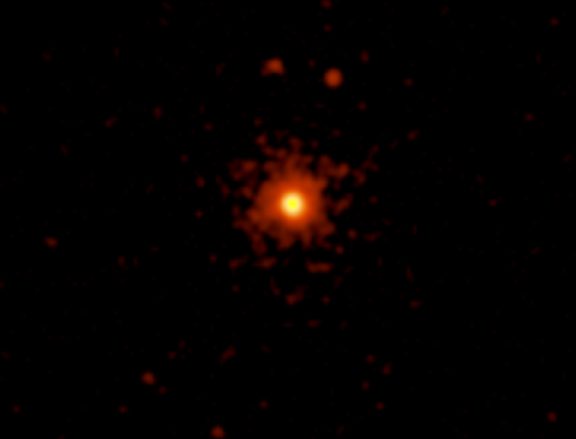[/caption]As the nearest star from our Solar System, Proxima Centauri is a prime candidate for future interstellar travel and space colonization missions.
In the meantime, scientists are trying to determine whether this star has super Earths orbiting within its habitable zone. Habitable zones are regions around a star where planets are believed to receive just the right amount of heat. For instance, Earth is within the Sun’s habitable zone.
If we were slightly nearer, say on Venus’ orbit, the heat would have evaporated all our oceans. On the other hand, if we were slightly farther, the temperature would have been too cold to support life.
So far, searches in the neighborhood of Proxima Centauri have revealed nothing. Even companion stars or supermassive planets that may be accompanying the star have not yet been discovered (if they are ever there at all). Although the search continues, some scientists believe Proxima Centauri’s flares can be a big obstacle for life even inside the star’s habitable zone.
Proxima Centauri’s flares are believed to be caused by magnetic activity. When a flare occurs, the brightness of all electromagnetic waves emitted by the star increases. This includes radio waves as well as harmful X-rays. The most common flare stars are red dwarfs, just like Proxima Centauri.
Now, even if Proxima Centauri is the nearest star, it is still 4.2 light years away. That’s about 4 x 10 13 km. The spacecraft that would take the first explorers to that system would have to rely on a virtually unlimited supply of energy. Furthermore, sufficient shielding against cosmic radiation should be in place.
Proxima Centauri is smaller than our Sun with a mass of approximately 0.123 solar masses and a radius of only about 0.145 solar radii. Its interior is believed to be totally dependent on convection when it comes to transferring heat from the core to the exterior.
Discovered in 1915 by Robert Innes, the Director of the Union Observatory in Johannesburg, South Africa, the star was observed to have the same proper motion as Alpha Centauri. Further studies confirmed that it was in fact very close to Alpha Centauri. The current distance between the two is estimated to be about only 0.21 light years.
Here are some articles in Universe Today that talk about Proxima Centauri:
What is the nearest star to the Sun?
Can’t get enough of stars? Here’s Hubblesite’s News Releases about Stars, and here’s the stars and galaxies homepage..
We have recorded several episodes of Astronomy Cast about stars. Here are two that you might find helpful: Episode 12: Where Do Baby Stars Come From, and Episode 13: Where Do Stars Go When they Die?
Source: Wikipedia

